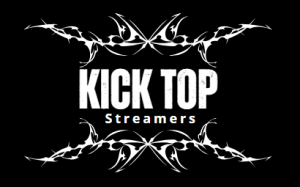In recent years, Twitch has evolved from a niche platform for gamers to a vibrant community hub for all kinds of streamers. Whether you want to share your gameplay, chat with followers, or showcase a creative hobby, Twitch offers a space to connect with an audience. But for many beginners, the thought of setting up a stream can feel overwhelming. This article breaks down how to create Simple Twitch streams effortlessly, so you can start building your audience and enjoying the streaming experience without stress or confusion.
1. Understanding Twitch and Its Potential
Twitch is a live streaming platform primarily known for video game content, but it now hosts streams of all kinds — art, music, cooking, talk shows, and more. The appeal lies in its real-time interaction between streamers and viewers through chat, creating a sense of community.
Starting with a simple stream means focusing on the essentials: delivering content you enjoy and engaging with your viewers. You don’t need complicated setups or expensive equipment to begin.
2. Setting Up Your Twitch Account
Before you can stream, you’ll need a Twitch account. Signing up is free and straightforward. Once your account is ready, customize your profile by adding a profile picture, banner, and bio that reflect your personality or streaming theme. This helps viewers get to know you better and encourages them to follow.
Enable Two-Factor Authentication (2FA) for security—Twitch requires this before you can stream, adding a simple but important layer of protection.
3. Choosing Your Streaming Equipment
One of the easiest ways to stream effortlessly is to start with equipment you already have. Many beginners stream directly from their PC or gaming console with minimal gear.
Computer: A moderately powerful PC or laptop works well. You don’t need the latest gaming rig for simple streams.
Camera and Microphone: While these improve quality, you can start with your built-in webcam and microphone. Clear audio is more important than perfect video.
Internet Connection: A stable and reasonably fast internet connection is key. Twitch recommends at least 3-6 Mbps upload speed for smooth streaming.
If you want to upgrade later, investing in a USB microphone or external webcam is a good step, but it’s not required for your first stream.
4. Picking the Right Streaming Software
To broadcast on Twitch, you’ll need streaming software. The most popular option is OBS Studio (Open Broadcaster Software), which is free, open-source, and beginner-friendly. It works on Windows, Mac, and Linux.
OBS Studio allows you to capture your screen, webcam, and audio, then send the video feed to Twitch. Setting up OBS is relatively simple:
Download and install OBS.
Connect OBS to your Twitch account by entering your stream key (found in your Twitch dashboard).
Add “Sources” like your game window, webcam, and microphone.
Configure basic settings like video resolution and bitrate.
You can find many beginner tutorials online to guide you through the setup step-by-step.
5. Planning Your Stream Content
Effortless streaming also means having a loose plan. Think about what you want to share with your audience. Are you playing a specific game? Doing a creative project? Hosting a chat session? Having a general idea will keep you focused and help maintain viewer interest.
Remember, authenticity matters more than perfection. Speak naturally, enjoy yourself, and don’t stress about every detail. The Twitch community appreciates genuine connections.
6. Going Live: Your First Stream
When you’re ready, hit “Start Streaming” in OBS or your chosen software. Before that, write a simple but clear title for your stream. Include what you’re doing to attract the right viewers.
During your stream:
Engage with chat as much as possible.
Don’t worry if only a few people show up at first — building an audience takes time.
Keep the pace natural; take breaks when needed.
Avoid complicated overlays or scenes in your first streams; simplicity reduces stress and technical issues.
7. Growing Your Channel Without Overwhelm
Consistency is more important than frequency. Streaming a couple of times a week at set times helps viewers know when to tune in.
Interact with your audience during streams and on social media. Ask for feedback and ideas to improve.
You can gradually add elements like custom alerts, chat bots, and graphics, but only once you feel comfortable with the basics.
8. Troubleshooting Common Issues Simply
Streaming can sometimes come with technical hiccups, but many common problems have easy fixes:
Lag or buffering: Lower your stream quality settings or check your internet speed.
Audio problems: Make sure your mic is selected in OBS and not muted.
Software crashes: Keep your streaming software updated and close unnecessary apps while streaming.
If something doesn’t work, take a break and revisit the setup calmly. The goal is to enjoy streaming, not to get frustrated.
9. Final Tips for Effortless Streaming
Stay relaxed: Mistakes happen. Laugh them off.
Be yourself: Viewers come for your personality.
Have fun: Your enjoyment is contagious and keeps viewers coming back.
Learn gradually: Take your time exploring new tools or features.
Conclusion
Streaming on Twitch doesn’t have to be complicated or intimidating. By focusing on simple setups, authentic content, and gradual learning, you can start streaming effortlessly. The key is to begin with what you have, engage genuinely with your audience, and enjoy the process. Whether you want to be the next gaming star or just share your hobbies, Twitch offers a welcoming space to create and connect — all without stress or technical overwhelm.
